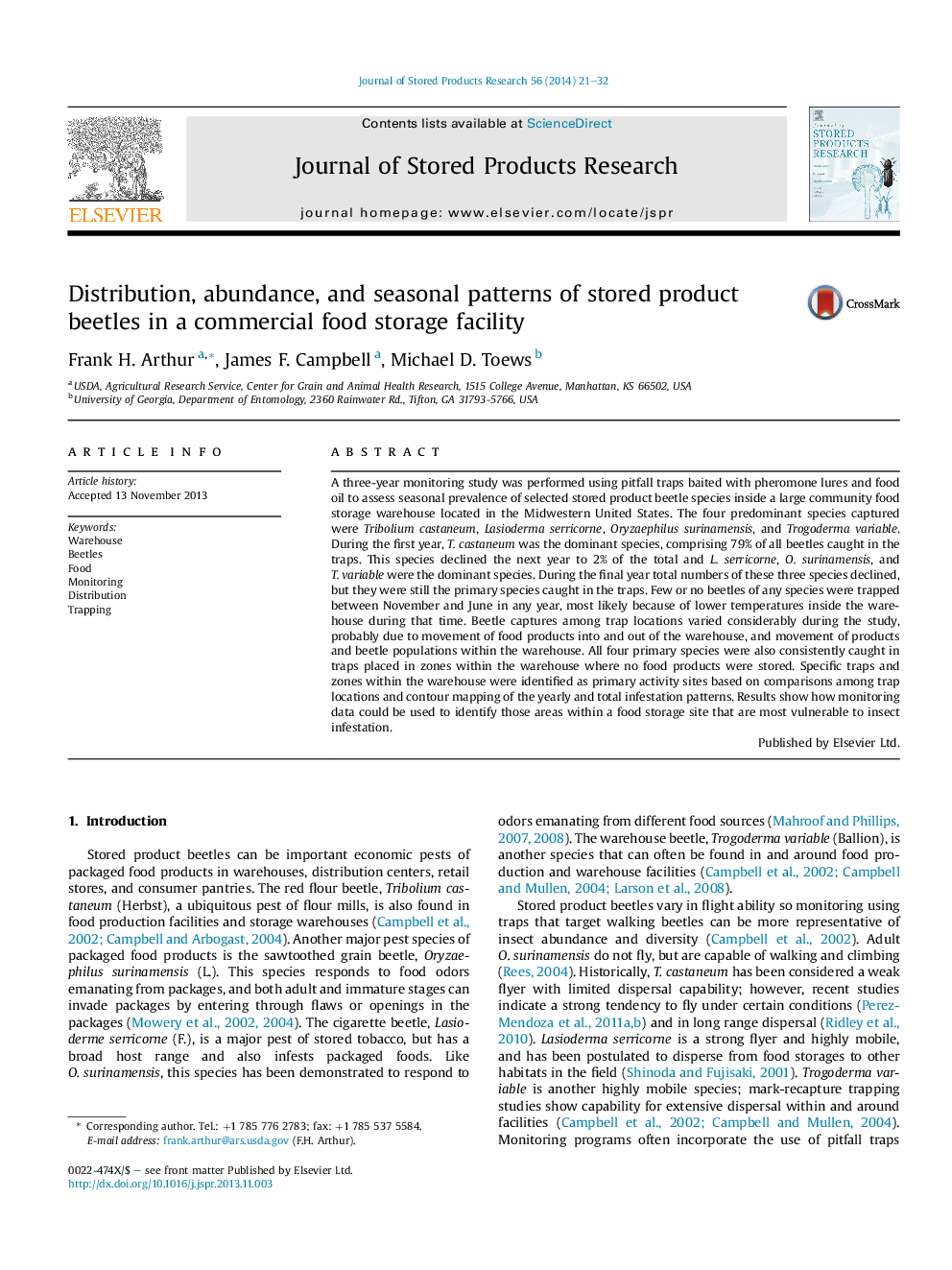| Article ID | Journal | Published Year | Pages | File Type |
|---|---|---|---|---|
| 4517083 | Journal of Stored Products Research | 2014 | 12 Pages |
•Species composition of stored beetles in food warehouses changes with time.•Distribution and abundance can change within and between years.•Specific focal points of infestations can be identified even with variable distribution.
A three-year monitoring study was performed using pitfall traps baited with pheromone lures and food oil to assess seasonal prevalence of selected stored product beetle species inside a large community food storage warehouse located in the Midwestern United States. The four predominant species captured were Tribolium castaneum, Lasioderma serricorne, Oryzaephilus surinamensis, and Trogoderma variable. During the first year, T. castaneum was the dominant species, comprising 79% of all beetles caught in the traps. This species declined the next year to 2% of the total and L. serricorne, O. surinamensis, and T. variable were the dominant species. During the final year total numbers of these three species declined, but they were still the primary species caught in the traps. Few or no beetles of any species were trapped between November and June in any year, most likely because of lower temperatures inside the warehouse during that time. Beetle captures among trap locations varied considerably during the study, probably due to movement of food products into and out of the warehouse, and movement of products and beetle populations within the warehouse. All four primary species were also consistently caught in traps placed in zones within the warehouse where no food products were stored. Specific traps and zones within the warehouse were identified as primary activity sites based on comparisons among trap locations and contour mapping of the yearly and total infestation patterns. Results show how monitoring data could be used to identify those areas within a food storage site that are most vulnerable to insect infestation.
